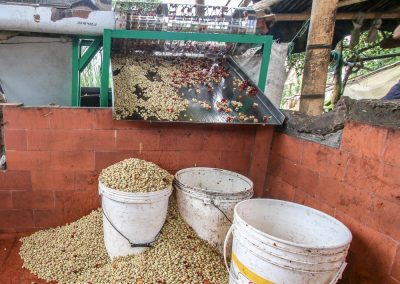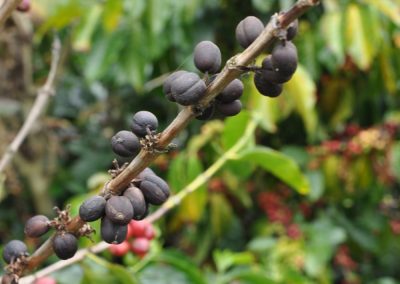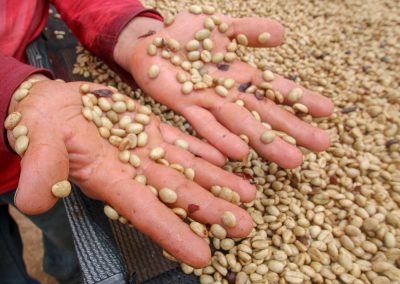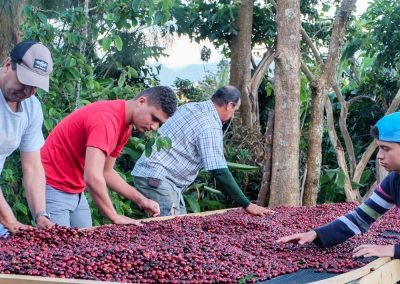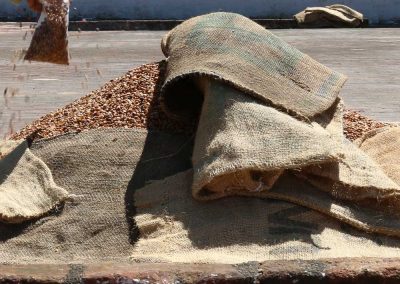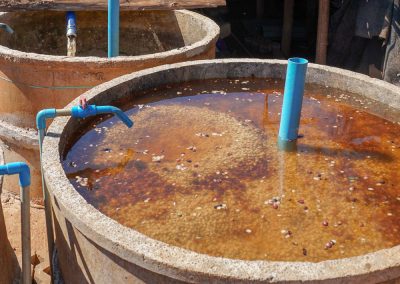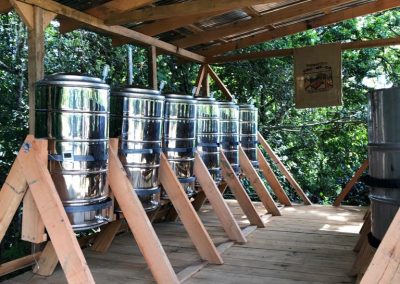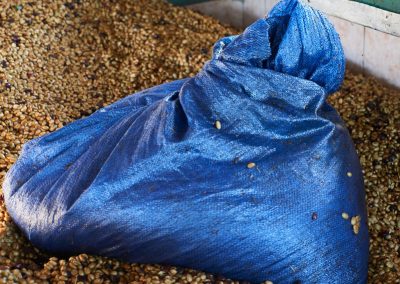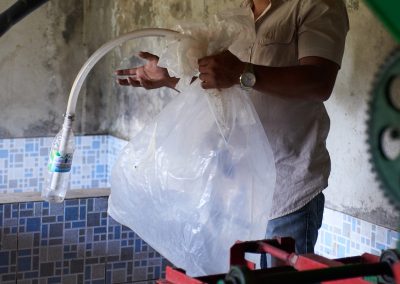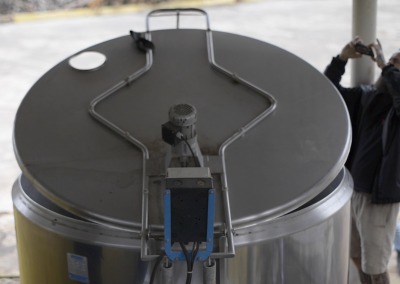PROCESSES
What makes coffee taste how it does? The answer is almost always, “It’s complicated.”
There are countless variables that impact the characteristics a coffee bean expresses: The coffee plant’s botanical genetics are at play, as well as the terroir where it’s planted, the ripeness of the picked coffee cherry, the roasting style and quality, and, of course, the final brewing.
At Cafe Imports, we happen to think that post-harvest processing is one of the biggest determining factors of a coffee’s profile and characteristics. Of course, as with everything else in coffee, not only the methodologies but also the terms and results will vary from place to place—even from farm to farm between neighbors.
Coffee is processed differently throughout the world, sometimes due to tradition, or as the result of experimentation and intentional design. Producers globally explore and tweak their processing methods every day: The results can be astounding or appalling, such is the nature of experimentation.
There are several major categories of coffee processing that are generally recognized in the coffee industry. These are called by different terms depending on what country you are in or what language you are speaking, but the basic elements and steps are generally similar or at least recognizable.
Additionally, we tend to interchangeably use the terms “fermentation” and “processing,” just like we swap the terms “altitude” and “elevation.” They are related, but they are not equivalent: There is fermentation happening during processing, but not all processing is fermentation. Below, we briefly describe and explain not only the bullet points of the processing methods themselves but also touch briefly on the role that fermentation plays in each.
WASHED
Fruit Removal: Typically depulped (skin removed) or demucilaged (skin and pulp removed) within 24 hours of harvest
Fermentation: Depulped coffees are typically held in “fermentation tanks” for 12–72 hours; demucilaged coffees are not commonly held in tanks but moved to drying surfaces or equipment. Fermentation may occur from the moment of harvest until the seeds reach an inhospitable moisture content for them (11% moisture)
Drying Time: On average, 18–36 hours mechanically; 7–15 days on patios, raised beds, or in parabolic dryers
Profile: Clean, articulate flavors; caramel or sugary sweetness; a wide spectrum of fruit acidity depending on other factors; capable of bright, crisp notes
The quickest and arguably the most efficient of the post-harvest processing methods is often called Washed or Wet process, though, confusingly, it doesn’t always require water. This process is the primary method for preparing specialty-quality coffee in most of Africa, Central and South America (with the exception of Brazil, where it’s uncommon), and select parts of the Asia-Pacific growing region.
Based on place, tradition, climate, and access to resources such as fresh water, your mileage may vary on the particular approach any number of producers will take, but “Washed” as a loose definition typically means that the coffee fruit has been removed from the coffee seed as quickly and as cleanly as possible. Some professionals and even some coffee markets and contracts differentiate between “Fully Washed,” which does use water, and other types of “Washed” coffees, such as those that have their mucilage mechanically removed.
This process is probably the one in which the use of the term “fermentation” is most often used incorrectly, as we often assume that fermentation happens only when the seeds are stored, contained, or held in an actual “fermentation tank.” On the contrary, fermentation begins the moment there is an access point in the fruit that allows microorganisms like yeast and bacteria to begin metabolizing sugars such as fructose and sucrose. Often, this access point is created at the time of picking, when the fruit and stem are separated and a small hole is typically created. Fermentation can take place in Washed coffees as long as there is either fruit material (mucilage) and/or a certain amount of water (11% moisture) available as a fuel source.
That being said, generally, in the coffee industry, we describe the “length of fermentation” as being a period of time in which coffee is piled in tanks or held underwater, with the goal of either accelerating or retarding the ability and access that microorganisms have to the fruit material. “Open,” or “dry fermentation” are terms used to describe coffees that are depulped (have their skin removed) and are then placed in open-air tanks or buckets and allowed to sit in their mucilage, typically for 24 hours or less though occasionally for as long as 72 hours. “Underwater,” or “wet fermentation” can take longer, depending on the climate, water quality, and activated populations of microorganisms.

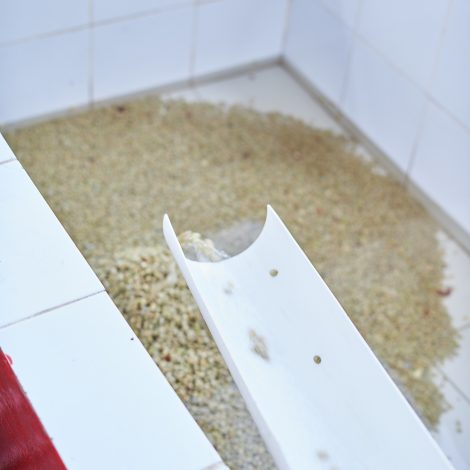
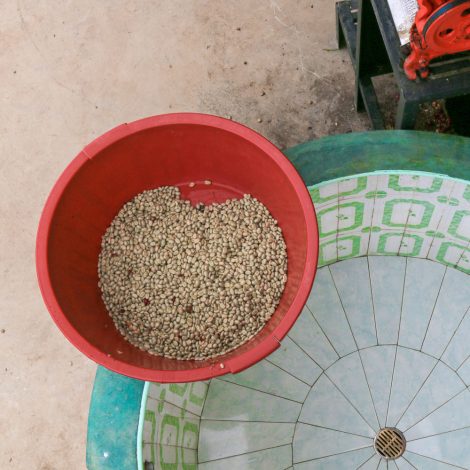
NATURAL
Fruit Removal: After drying
Fermentation: Occurs inside the fruit mucilage surrounding the seed and under the pulp, will take place as long as there is fuel available to the microorganisms (e.g. sugar, moisture, acids, etc); the seeds typically become inhospitable to microorganisms when they reach 11% moisture
Drying Time: Up to 30 days on average, weather permitting
Profile: Noticeably fruity or “pulpy” flavors, often described as “boozy” or “winey”; can also have strong nutty and/or chocolate characteristics, and typically has a heavier or syrupy body
While Washed coffees have their fruit removed relatively quickly after harvesting, Natural or “Dry” process coffees are something like the opposite, in a manner of speaking: The fruit is instead picked when ripe and allowed to dry completely around the seed before being husked or hulled off. While historically this hulling was done by hand with a kind of mortar-and-pestle setup, today it’s done by machinery that can be finely calibrated. Natural process coffees are most commonly found in Ethiopia, Yemen, Brazil, and Costa Rica, though producers around the world are also experimenting with this methodology.
As with all coffee preparation, there is fermentation occurring during the processing, from the moment the coffee is picked (or possibly earlier, whenever an access point is created in the fruit). Local or intentional populations of yeast and bacteria will enter the fruit at the access point and begin to metabolize the sugars and acids inside the coffee fruit immediately, a process that can continue until the coffee is dried to the standard of 11% moisture. While the coffee itself is not held in “fermentation tanks,” its fermentation process can be altered by things like ambient temperature and exposure to full sun or shade; depth on the drying bed; rotation of the coffee during drying, etc.
(Note: At Cafe Imports, we typically avoid describing these coffees as “Sun-Dried” and instead prefer the term “Natural,” since many other coffees are also dried under the sun. We also avoid using the term “Unwashed,” which is common in some parts of the world.)
Drying Natural coffees is considerably longer and the overall process is riskier than for Washed coffee, which hints at some reasons the Washed technique was developed: Naturals take more space on drying surfaces, require more attention and labor (to prevent mold and infestation during drying, for example), and are constantly at potential risk for spoilage or “overfermentation,” as the fruit material that is intact on the seeds provides a longterm and concentrated fuel source for yeast and bacteria to metabolize.
Natural processing is the oldest basic technique for preparing coffee, and in ancient times (as well as currently in some cultures and applications), it’s possible that the coffee fruit was allowed to dry completely while still on the branch, allowing it to be harvested only when needed. Modern Natural coffees are harvested ripe and intentionally dried, typically on patios, raised beds, or drying tables; they cannot be dried in mechanical dryers as Washed coffees can.

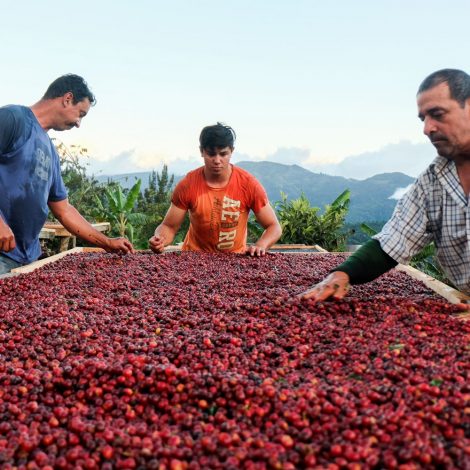
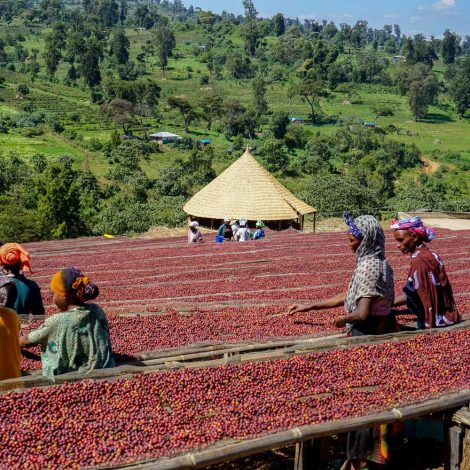
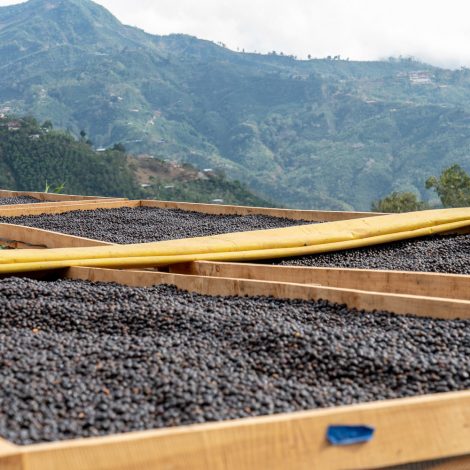
HONEY
Fruit Removal: Fruit skin is removed within 24 hours of harvest; all or some of the mucilage is left to dry on the seeds
Fermentation: Occurs throughout the drying process (until seeds reach a moisture content of 11%)
Drying Time: 18–25 days on average
Profile: Can express some fruity/pulpy/jammy flavors or stewed-fruit-like characteristics; caramel or burnt-sugar sweetness; nuttiness
The relatively recent emergence of a processing style known as Honey has become prominent throughout Central American coffee-producing countries, perhaps most notably Costa Rica. In many respects, the Honey process is similar to the Brazilian post-harvest process known as Pulp or Pulped Natural. Similar to the Pulped Natural methodology, Honey coffee is depulped to remove the skin of the cherry, and the coffee seed is allowed to dry with some or all of its sticky fruit mucilage intact. This process retains some of the desirable characteristics of a full Natural coffee (heavy body, sweet fruitiness with lower acidity, deep chocolate notes) while also speeding the drying process considerably, and reducing some of the risks of spoilage, mold, and other defects that can occur with fully intact coffee cherry on the drying patios or tables.
In Costa Rica (and increasingly in El Salvador and Honduras, among other places worldwide), some producers will remove a particular amount of the mucilage material in order to manipulate the coffee’s finished profile. Others focus on modulating the drying process to achieve different Honey levels, assigning differentiating terms to correspond with the results, from Yellow/Golden Honey (the mildest, perhaps closest to Washed coffees), Red Honey, and Black Honey (which is arguably most comparable to the Brazilian Pulped Natural).
The most obvious benefit to the Honey process over strict Naturals is the speed and efficiency of the drying process, as well as the various flavor characteristics that can emerge through fermentation and exposure. On the other hand, the exposed fruit material does create more risk for the producers, as it requires more labor in drying to prevent taints from developing. These coffees will also often have an uneven or inconsistent appearance in their green forms, which can be unappealing for roasters who are used to the more uniform cleanliness of a Washed coffee.
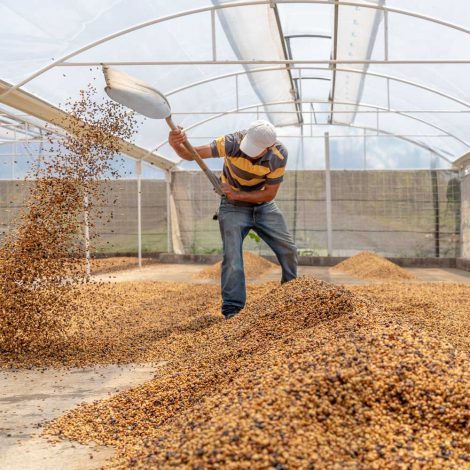
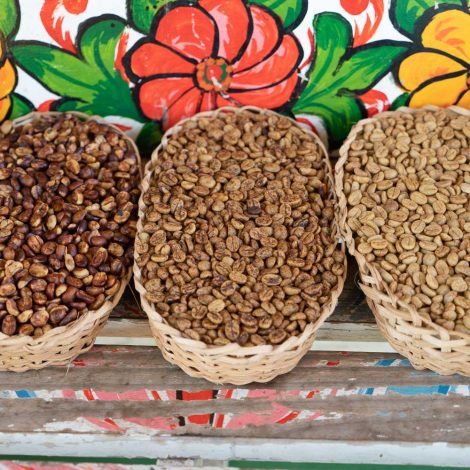

WET-HULLED
Fruit Removal: Coffee is generally depulped within 24–48 hours; mucilage remains on the seeds until it is purchased by a collector and/or delivered to a mill
Fermentation: Occurs in the coffee from the moment it is picked, and is accelerated during the piled or sack phase, will continue until the coffee is completely dry to 11% moisture for export
Drying Time: 12–15 days, on average
Profile: Earthy, savory, herbaceous, heavy body, dark chocolate, nutty
Areas of Indonesia—including Sumatra, where it is best-known—are famous for this rather specific and flavor-altering processing method, which is vastly different from other commonly used styles. Broadly speaking, the Wet-Hulled process is a result of a combination of environmental conditions, market access, and traditions found in Indonesia which sets these coffees apart from the rest of the world.
The process can be simplified for description, but as with other processing methods, your mileage may vary from region to region or mill to mill. After harvesting, the coffee is often depulped in small machines on-site at a farm or household, and then the depulped seeds are stored in plastic tanks or jute sacks to await delivery to a collection point. (Sometimes cherry is delivered to the mill instead, depending on the producer’s available resources.) While in these containers, the mucilage is available for microorganisms to begin to metabolize the sugars, acids, moisture, and other compounds in the mucilage, which remains clinging to the seeds. The coffee is then delivered at high moisture to a market, collector, or receiving point, where it is purchased and then transported and/or sold to a mill for hulling. At this point, the coffee is typically between 35–50% moisture—quite a bit higher than the 10–12% moisture at which most coffees are hulled. The mucilage and parchment layers are removed simultaneously using specialized machines, and then the coffee is typically laid tarpaulins for drying.
In some areas of Sumatra, the wet parchment coffee is held in tanks and fermented briefly (12 hours or so) before being washed clean of its mucilage. It’s then given a pre-dry of a few hours and Wet-Hulled.
It is important to recognize that while it is parchment coffees that are typically spread to dry in other producing countries, it’s what we call “green coffee” that is dried in the Wet-Hulled process. Removing the protective parchment layer so comparably early in the process creates not only the very distinct flavor profile from these regions, but also adds a bit of risk, as the seeds themselves are more vulnerable to environmental factors (such as rising and falling relative humidity) and other interference or taints (animals, for instance, or dirt and debris). However, part of the effectiveness of Wet-Hulling, or Giling Basah, is the rapidity of drying after the coffee is hulled: The damp climate and cloud cover over Sumatra can render other drying methods difficult or inviable for commercial production. Wet-Hulling also allows producers and mills slightly more flexibility when it comes to selling and delivering their yield, which is especially significant to smallholder farmers in rural, remote areas.
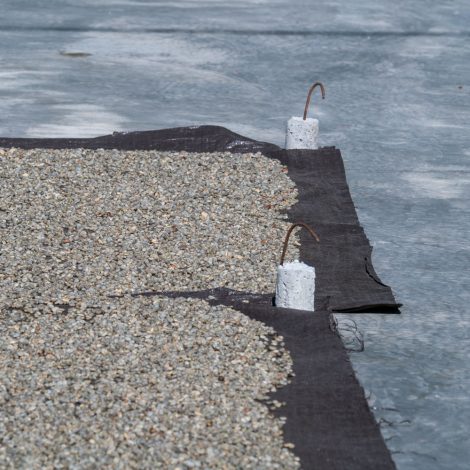


PULPED NATURAL
Fruit Removal: The skin of the fruit is typically removed within 24 hours of harvest; mucilage is left intact on the seed
Fermentation: After skin removal, the mucilage-covered coffee is moved to a drying surface, where it will ferment as it is exposed to air and microorganisms until it reaches an inhospitable moisture content for them (11% moisture)
Drying Time: 10–15 days on average, typically on patios
Profile: Pulpy fruit, nutty characteristics, citric acid, chocolate, syrupy or creamy body, medium-low acidity but often noticeably fruity flavor
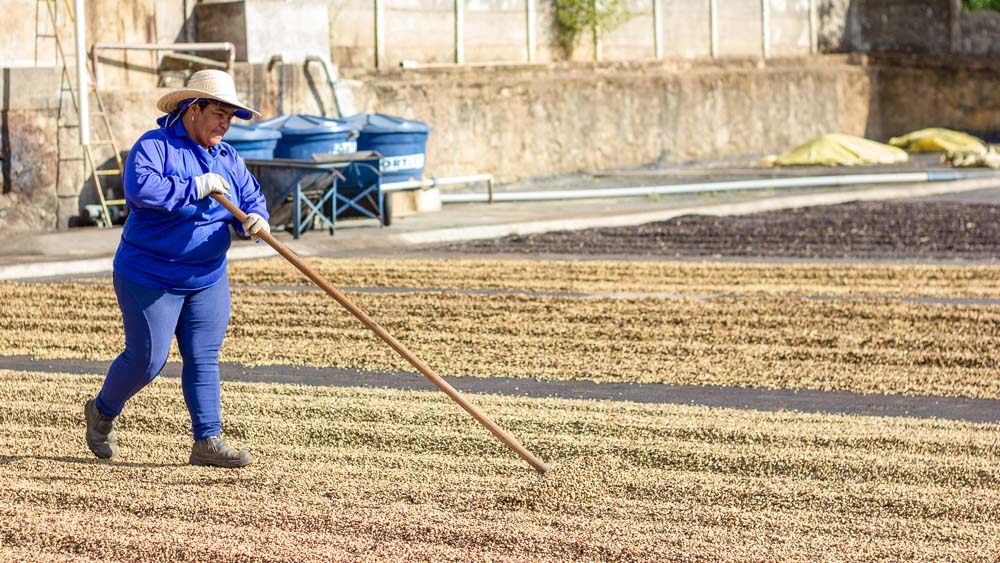
In most respects, Pulped Natural is a similar process to Honey, where the coffee cherry’s skin is removed and the seed is allowed to dry in its mucilage layer. Though the steps are almost identical, one of the key differences is that Pulped Natural process was developed in Brazil in order to speed the drying process, as the more traditional Natural process can take quite a bit longer to complete, which puts the coffee’s quality at greater risk. In Costa Rica and elsewhere, Honey processing is primarily used to affect the flavor characteristics of a lot.
As a result, the profile of most Pulped Natural lots from Brazil tends to be quite different from the majority of Honey lots, in that there tends to be less of an intense fruity flavor in these lots, erring instead toward a toasted-nut or a chocolate characteristic with some pulpy or boozy notes underneath.
.
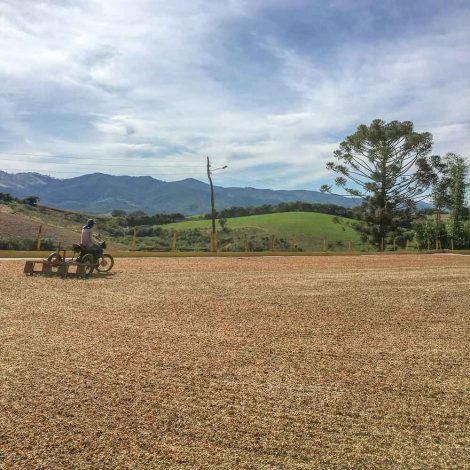
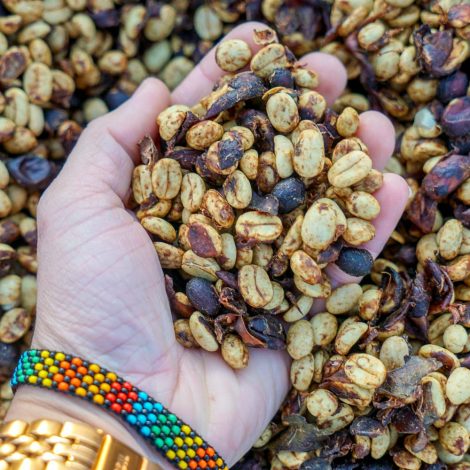
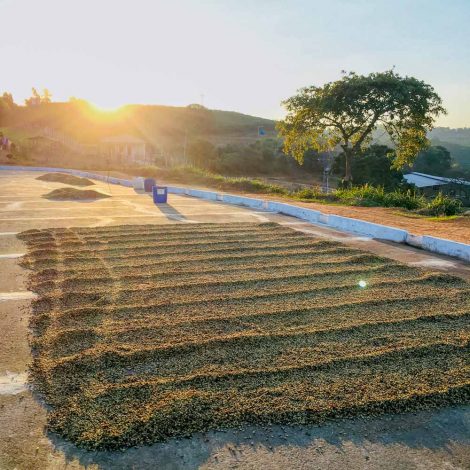
Decaffeination
Coffees of any process (Washed, Natural, Honey, etc) can also be processed for decaffeination. The decaffeination itself takes place after the coffee has been harvested, processed, and had its parchment layer removed; most of the time, coffees need to be sent to specific facilities to be decaffeinated, rather than having the caffeine removed at the mill level.
At present, there is no such thing as a genetically decaffeinated coffee, which means that decaf coffee needs to be created by physically removing the caffeine from green coffee seeds. Most of today’s decaf processing methods are sophisticated and thorough and can remove 99 percent of the caffeine naturally present in coffee.
Many different techniques exist for decaffeinating coffee: Below, described briefly, are the types of decaf coffees that La Bodega sells.
Ethyl Acetate (E.A.) – This naturally occurring ester (present in bananas and also as a by-product of fermented sugars) can be isolated and used as a solvent to bond with and remove caffeine from green coffee. First, the coffee is sorted and steamed for 30 minutes under low pressure in order to open the coffee seeds’ pores and prepare them for decaffeination. The coffee is placed in a solution of both water and ethyl acetate, where the E.A. will begin to bond with the salts of chlorogenic acids inside the seeds. The tank will be drained and re-filled over the course of eight hours until caffeine is no longer detected. The seeds are steamed once more to remove the ethyl acetate traces, though E.A. is only harmful to humans in very high quantities (400 parts per million or more). The coffee is then dried and polished for export.
Learn more about the E.A. Decaf process here.
Mountain Water Process (MWP) – Our water-processed decafs are done in a facility in Mexico called Descamex. In order to remove the caffeine in this process, green coffee is soaked in a water solution, which removes both the caffeine as well as other solubles in the coffee (flavor compounds, for instance). The water is removed from the seeds and run through a special filter that captures caffeine molecules and allows them to be strained from the solution. The solution—now containing flavor compounds but no caffeine—is then reintroduced to the green coffee seeds, which reabsorb the soluble materials. The coffee is then dried once more, and prepared for reexport.
Methylene Chloride (MC) – Like in other decaffeination processes, methylene chloride is a solvent that is used to bond with and strip caffeine molecules from the green coffee seed. The KVW MC process first uses hot water to extract caffeine and other solubles from the coffee seeds, and then the seeds are removed from the water. Methylene chloride is then added to the water solution, and it bonds with the caffeine; because MC is not miscible with water, it is easily removed from the solution along with the bonded caffeine, and the coffee seeds are re-submerged in order to absorb their soluble compounds. The United States Food and Drug Administration has stated that MC is safe for use in decaffeination processes, and is harmless to humans in consumption of 10 parts per million (ppm) or less. Coffee decaffeinated using this method has been shown to contain a fraction of that safe amount.
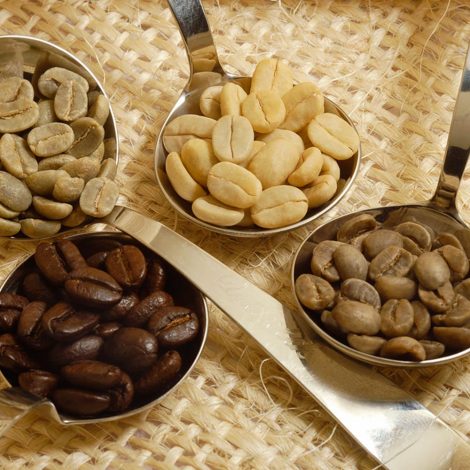

Fermentation
Some of our very favorite foods and beverages are fermented: chocolate, wine, beer, bread, sauerkraut, kimchi, and… coffee? Well, yes and no: While fermentation is involved in the production of a majority of the world’s coffee, coffee itself isn’t a fermented beverage like spirits or kombucha are. Instead, when we talk about coffee fermentation, we’re referring to what the coffee fruit undergoes between the time that the cherries are harvested and the seeds are fully dried and ready for export.
The word “fermentation” describes the process of metabolization of sugars and other compounds by microorganisms like yeasts and bacteria, which will consume those compounds and convert them into fuel for their own use, leaving behind useful by-products like ethanol and different acids. Those converted compounds are absorbed into the cellular structure of the seed and, when heat is applied to those seeds in the roaster, the compounds will be what transform into the flavors we love in coffee: Complex tastes, fruity acids, and other good, or at least interesting, stuff.
Understanding Coffee Fermentation, Processing, and Flavor
While it’s an integral part of coffee’s post-harvest processing and plays a large role in the development of coffee flavor, fermentation is not a very widely understood aspect of coffee’s production cycle, though fermentation does occur in almost every style of coffee preparation. We often use the words “fermentation” and “processing” interchangeably and incorrectly: While they are related, they’re not identical. Fermentation is a natural occurrence that is undertaken by living microorganisms that are in search of energy sources; processing is a purely agricultural set of mechanical and technical steps designed to prepare a crop product for export. While fermentation can be used as part of processing, that distinction is important.
When we think about fermentation, we try to consider many variables, such as: the ripeness of the fruit; the ambient temperature in the environment as well as the temperature in the coffee as it is; say, piled or soaking in fermentation tanks or spread on patios drying, the local population of microorganisms; the water activity and moisture content throughout the drying process; and even more. It is a very difficult process for producers to track, and so most of the ways we discuss fermentation are colloquial, anecdotal, or “layman’s terms.”
The microorganisms that perform fermentation processes are found almost everywhere, and they will begin to consume fuel as soon as they have access to it, which means that fermentation can actually begin before the coffee cherry is even picked. The more fruit material that is exposed to the environment and to the population of microorganisms (when the skin is removed from the cherry, for instance), the faster this process can happen.
Different types of bacteria and yeast populations—which will vary based on location, climate, and health of the local ecosystem—consume different compounds and, so, convert them into different by-products, but generally speaking they will continue to ferment whatever useful material is available to them until they are no longer able to survive. For instance, in a Natural process coffee, they will ferment the fruit material around the seed until either all of the fuel is metabolized or until the environment is too dry for them to live. In a Washed process, the fermentation might happen all the way through the drying process, depending on how much mucilage was left on the parchment after the washing was completed.
Anaerobic Fermentation
As producers consider the effect of fermentation more and more on the quality and profile of their coffee, they are adopting different and interesting techniques to their repertoires in order to diversify their offerings. One method that’s becoming more popular is fermenting coffee in a controlled anaerobic environment, meaning that the coffee is held in a vessel without any presence of oxygen during some of all of the duration of fermentation.
The fermentation process itself is already anaerobic, meaning that the yeast and bacteria that do the work of fermenting a coffee cherry’s sugar content do not need oxygen to be present in order to successful complete their mission or transform the organic material. (This is why we specify that it’s the environment that’s anaerobic in these cases.) One of the main benefits of holding the coffee in an oxygen-depleted environment, then, is to slow the fermentation process, which allows a totally different spectrum of flavors to express. Where in a Washed process the controlled fermentation might last 12–24 hours on average, anaerobic environment fermentation can take 96 hours or longer, depending on the thermal retention inside the tank.
Different fermentation-tank materials will have different thermal retention, and producers choose wisely based on the desired effect. Stainless steel is a common material, as is thick plastic. The tanks will contain a one-way valve that allows the producer to remove oxygen from the vessel and release CO2 created during the fermentation process; careful monitoring of the coffee fruit’s pH as well as the temperature inside the tank is pivotal to ensuring the success of the process.
After fermentation, the coffee’s processing can be completed in any number of ways: The fruit can be fully removed as in a Washed process, the pulp can be removed but the mucilage left on as in a Honey process, or the cherries can be dried whole as in a Natural. The length of drying time will vary based on this last step as well as the environment around the drying area.
Fermentation and Processing
On our Processes page, we attempt to outline when and how fermentation occurs during the most commonly found post-harvest processing methods, while also recognizing that there are no hard-and-fast rules in coffee, and your mileage may vary. In our coffee traceability profiles, we attempt to share as much information as can reasonably be gathered and provided by producers, knowing that there is not an efficient and concise way to share all the relevant details.
Click the links below to read more about fermentation in specific coffee processes, and for more background information on our fermentation musings, refer to our blog “Understanding Fermentation and Coffee.”
